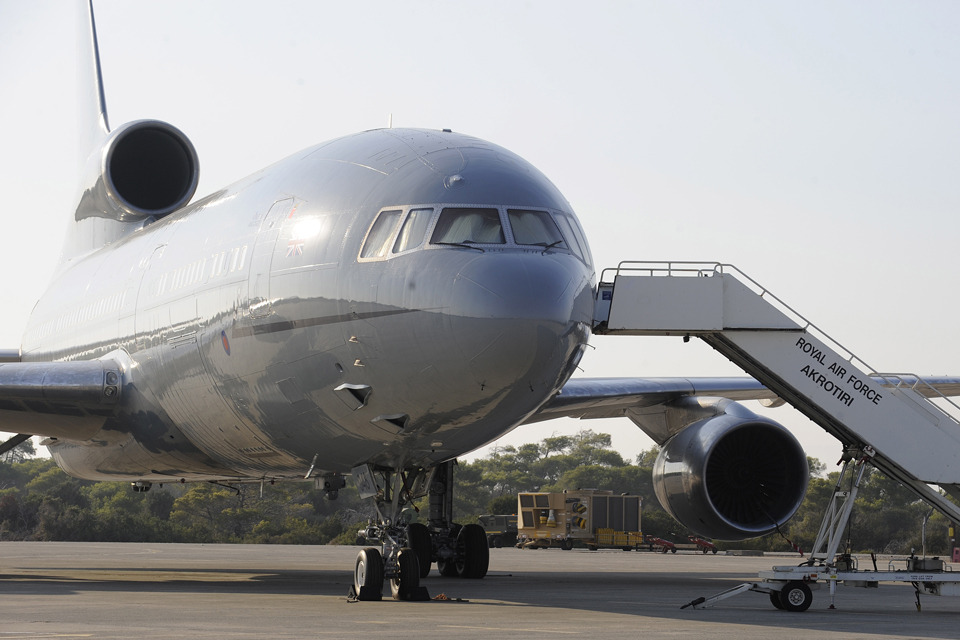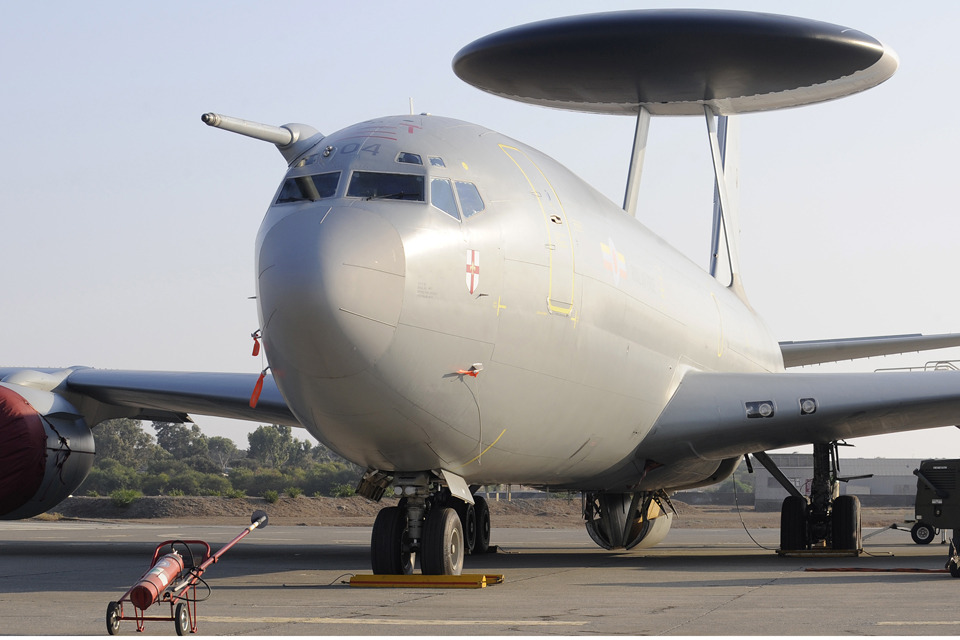RAF units return from Cyprus
RAF units deployed to Cyprus as part of the UK response to the recent crisis in the Middle East have returned home.

RAF Typhoon jets from 11 Squadron take off from RAF Akrotiri (library image) [Picture: Senior Aircraftwoman Helen Rimmer, Crown copyright]
Aircraft and personnel from 121 Expeditionary Air Wing (EAW) were sent to the region earlier this year as a contingency measure to protect the 2 sovereign base areas on the island, which are home to more than 6,000 British service personnel and their families.
The unit comprised Typhoon jets and E-3D Sentry early warning aircraft supported by TriStar air-to-air refuelling tankers, RAF Regiment force protection personnel and fighter controllers.

RAF pilots of 11 Squadron pose for a group shot at RAF Akrotiri in Cyprus (library image) [Picture: Senior Aircraftwoman Helen Rimmer, Crown copyright]
121 EAW Commanding Officer, Wing Commander Blythe Crawford, said:
This operation has clearly proven that the UK still possesses a very capable and deployable air defence capability.
While our primary objective was to deter aggression and protect UK assets in the eastern Mediterranean, I cannot emphasise enough the value of this deployment at an operational and strategic level.
Our integration as a cohesive joint force with our sister service, the Royal Navy, then together as a UK force with both our French and US allies, has been an outstanding example of how Britain can rapidly respond, deploying a credible force, and immediately engage with key allies.

An RAF TriStar at RAF Akrotiri in Cyprus (library image) [Picture: Senior Aircraftwoman Helen Rimmer, Crown copyright]
Wing Commander Crawford said that aircraft from 121 EAW were able to conduct sorties from Cyprus within hours of arriving on 24 August to reduce the threat potentially posed at the height of the recent turmoil.
They included:
-
Typhoons from 11 Squadron based at RAF Coningsby which, over the 2-and-a-half months of the operation, flew 224 sorties
-
E-3D Sentry aircraft from 8 Squadron based at RAF Waddington, which routinely flew 10 sorties, 7-days-a-week, to provide command and control of other aircraft
In addition:
-
TriStar tankers from 216 Squadron based at RAF Brize Norton provided air-to-air refuelling
-
A-Type 101 radar from No 1 Air Control Centre based at RAF Scampton provided round-the-clock radar coverage and tactical control of aircraft during sorties
-
No 4 Force Protection Wing from RAF Brize Norton assumed responsibility for security at RAF Akrotiri in Cyprus within 12 hours of arriving

An RAF E-3D Sentry at RAF Akrotiri in Cyprus (library image) [Picture: Senior Aircraftwoman Helen Rimmer, Crown copyright]
The deployed force was followed by Royal Navy Type 45 destroyer HMS Dragon, which combined with RAF units to generate a constant picture of activity in the eastern Mediterranean as part of the air defence effort.
The Officer Commanding 11 Squadron, Wing Commander Chris Layden, said that as the threat in the region decreased the Typhoon detachment was able to hone its skills even further. He said:
Alongside defensive alert duties, 11 Squadron conducted an extensive training operation with French, US and British warships.
The deployment also required RAF units to operate in a multinational environment, including conducting joint operations with the American aircraft carrier USS Nimitz and the French Horizon Class destroyer Chevalier Paul.

A Typhoon jet of the RAF's 11 Squadron takes off from RAF Akrotiri (library image) [Picture: Crown copyright]